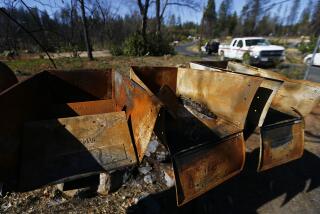Low-Risk Banks Spared in FDIC Premium Hike
- Share via
WASHINGTON — After months of lobbying by bankers and the Bush Administration, the Federal Deposit Insurance Corp. on Tuesday spared most of the nation’s banks and savings institutions from higher insurance premiums.
The board voted 4-0 to raise premiums only for less healthy institutions posing a greater risk to the federal insurance fund, which protects deposits up to $100,000.
Administration officials were concerned that a more broad-based rise, tentatively proposed by the FDIC in May, would crimp lending.
They said a rebound in bank earnings to a record $15.7 billion in the first half of 1992 has reduced prospects of bank failures and justified the smaller increase.
“I don’t think anyone has said we’re completely out of the woods yet, but the fact is, and it’s undeniable, that the industry has improved substantially over this year,” said Deputy Treasury Secretary John Robson.
But Democrats in Congress say that much of the higher profitability may be the result of temporarily low interest rates. And they question whether the lower premium increase will allow the insolvent FDIC to meet its 15-year deadline for repaying up to $75 billion it is authorized to borrow from taxpayers.
“The rate is still too low to rebuild the fund to a reasonable level anytime soon,” said Rep. Henry B. Gonzalez (D-Tex.), chairman of the House Banking Committee.
For 9,115 banks, or about 75% of the industry, the premium in 1993 will remain at 23 cents per $100 in deposits. For the worst 222 banks, the rate will jump to 31 cents. The remaining 2,703 banks will pay either 26 cents, 29 cents or 30 cents.
The average premium will be 25.4 cents. Now, all banks pay the same 23-cent premium. Next year will mark the first venture into a risk-based premium system designed to give institutions an added incentive to stay healthy.
Representatives of banking and business interests had opposed an increase, arguing that premiums have nearly tripled since in 1989. They said part of the increase will be passed on to consumers.
The new premium structure will bring in an estimated $6.35 billion, up from $5.75 billion this year, according to Roger Watson, FDIC research director.
If the board had stuck to the proposal it endorsed by a 3-2 vote in May, average premiums would have risen to 27.7 cents and brought in $6.93 billion.
But the death on Aug. 20 of FDIC Chairman William Taylor left the board with a potential 2-2 deadlock. That forced Andrew C. Hove Jr., the acting chairman, to work out a compromise.
Banking lobbyists generally were pleased with the FDIC’s decision to institute a rate structure that offers a break to healthy banks.
More to Read
Inside the business of entertainment
The Wide Shot brings you news, analysis and insights on everything from streaming wars to production — and what it all means for the future.
You may occasionally receive promotional content from the Los Angeles Times.










